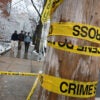Every American who buys gasoline pays 18.3 cents per gallon to the federal government’s Highway Trust Fund, which was created in 1956 to pay for the construction and maintenance of the interstate highway system.
But in recent years, the Highway Trust Fund has expanded to spend motorists’ tax dollars on things that have little to do with highways. For instance, the Transportation Alternative Program, created in 2012 to replace a variety of “transportation enhancement” programs and funded out of the Highway Trust Fund, siphons funding that otherwise would go to highway construction to a variety of projects that were traditionally in the hands of local governments.
These include sidewalks, bike paths, recreational trails, landscaping, historic preservation and (most oddly) archaeological projects.
Last year, the Transportation Alternative Program spent $820 million on local projects instead of maintaining the nation’s highways. Thanks to the program, your gas tax dollars are being spent on:
- The Geyser Road-Spa State Park Bicycle/Pedestrian Trail, Sarasota Springs, N.Y.: $1,600,000
- Restoration of the Cape Henry Lighthouse, Virginia Beach, Va.: $160,000
- Planting at Cape Carteret, Carteret County, N.C.: $7,255,055
- The Holmes County Trail – Nation’s First Buggy/Bike Trail, Holmes County, Ohio: $2,404,480
Having seen enough federal funding diverted from highways toward local pet projects, some lawmakers are calling for an end to the program. Earlier this week, Reps. Sam Johnson, R-Texas, and Vicky Hartzler, R-Mo., introduced the Right of Way for American Drivers Act, which would effectively end the Transportation Alternative Program and revert its funding back to maintaining the highway system.
Sending highway funding back to highway projects is a welcome development for the nation’s infrastructure. According to Johnson, the bill would end the unseemly practice of sending gas tax dollars “towards projects like buggy trails and bike paths rather than where they are needed most—roads and bridges.” Hartzler criticized the unnecessary “landscaping and scenic beautification projects” that no longer would receive funding.
This proposal would take a step to end the irresponsible allocation of highway spending and send funds back to where they should go—the vital highway infrastructure that carries millions of Americans and freight loads every day. Lawmakers should follow Johnson and Hartzler’s lead and focus federal spending on projects of true national significance and return control over local infrastructure to state and local governments.






























